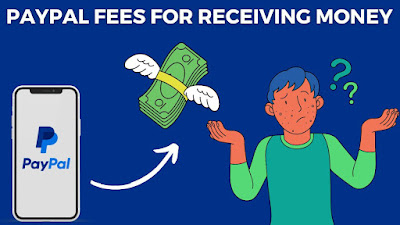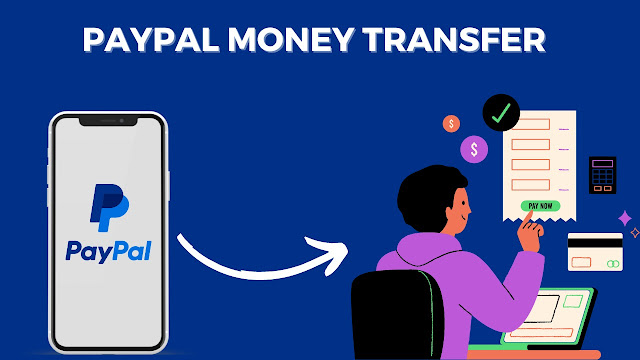PayPal Fees for Receiving Money: What You Need to Know (2023)
PayPal Fees for Receiving Money: What You Need to Know (2023)
PayPal is one of the most popular payment services, which allows seamless transactions between individuals and businesses worldwide. There are so many benefits of PayPal, such as convenience and security. However, there are additional fees associated with receiving money through the platform. If you are using Venmo, you must understand the ins and out of PayPal fees is crucial.
So, let's begin and learn the details of PayPal fees for receiving money, how to calculate them, who should pay them, and whether they are worth it. Please continue reading; you can clearly understand the fees involved and be equipped to make informed decisions regarding PayPal transactions.
What are the PayPal Fees?
There is a different fee for Venmo transactions. However, certain services are free on Venmo, such as sending money to family and friends within the same count. However, you may have to pay a fee depending on the nature of your payment which you will learn in the next section.
How to Calculate PayPal Fees?
The PayPal fee is calculated based on the factors mentioned below:
- Type of Transaction.
- The Currency Used
- Amount Received
How Much Does PayPal Take in Fees?
The exact amount PayPal takes in fees varies depending on the specific circumstances of the transaction. As of 2023, PayPal's fees for receiving money within the United States are typically 2.9% of the transaction amount plus a fixed fee of $0.30 per transaction. However, fees may differ for international transactions, micropayments, and specific types of businesses.
What Are PayPal Fees for Receiving Money?
The PayPal fee for receiving money depends on several factors, which are mentioned below:
- Goods and Services Payments: If you receive money for goods or services, PayPal charges a fee based on a percentage of the transaction amount and a fixed fee. The percentage fee and fixed fee depend on factors such as the country you are in and the currency used for the transaction.
- Donations: If you receive donations through PayPal, fees may be lower or waived, depending on the type of organization and the country involved. Nonprofit organizations and charities may be eligible for discounted or waived fees.
- Personal Payments: If you receive money from friends or family for personal reasons, such as repaying a debt or splitting expenses, PayPal usually does not charge a fee for domestic transactions within the same country.
Who Should Pay PayPal Fees for Receiving Money?
In most cases, the payment recipient is responsible for paying the PayPal fees for receiving money. However, clarifying this with the sender before the transaction occurs is essential. Some senders may cover or factor the fees into the total amount sent.
What Are the Benefits of Paying PayPal Fees?
While PayPal fees for receiving money may seem like an additional cost, there are benefits to paying these fees:
- Secure Payment Processing: PayPal offers secure payment processing, protecting the buyer and seller from potential fraud or unauthorized transactions. The fees contribute to maintaining this secure environment.
- When customers see that you accept PayPal, it instills confidence in the transaction. Many people trust PayPal as a secure and reliable payment method, which can help increase sales and customer satisfaction.
- Paying fees for receiving money on PayPal grants you access to various features and services provided by the platform. These include seller protection, dispute resolution, and the ability to withdraw funds to your bank account.
Are PayPal Fees Worth It?
Determining whether PayPal fees are worth it depends on your specific needs and circumstances. Consider the following factors:
- The fees may add up significantly if you receive a high volume of payments through PayPal. In such cases, assessing whether the benefits of using PayPal outweigh the costs is essential.
- Evaluate alternative payment methods and their associated fees. Compare the costs, features, and security measures other platforms provide to determine if PayPal remains the most cost-effective option for your situation.
- Consider the preferences of your customers or clients. If PayPal is a preferred payment method for a significant portion of your target audience, paying the fees may be worth it to accommodate their preferences.
Who Should Avoid Paying PayPal Fees?
While PayPal fees are a standard part of the platform, there are certain scenarios where you may be able to avoid or reduce the fees:
- If you receive money from friends or family for personal reasons within the same country, opt for the "friends and family" payment option, which usually does not incur fees.
- Sometimes, you can negotiate with the sender to cover the fees or adjust the payment amount to account for the fees.
- Explore alternative payment methods that may offer lower fees or better terms for your specific needs. Research other platforms and payment processors to determine if they offer more favourable fee structures.


Comments
Post a Comment